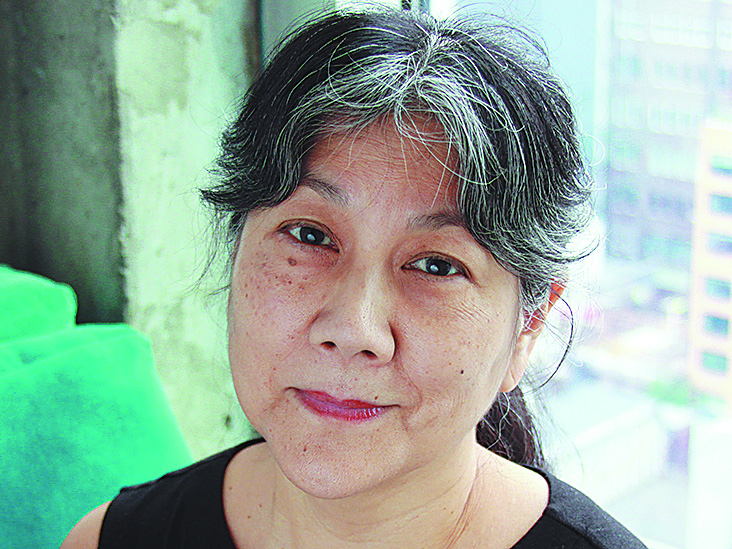Entwined struggles against racism inspire hope

Continuing efforts

During the buildup to the strike, the Asian American Political Alliance was founded at the University of California, Berkeley, giving birth to a new political and demographic category-"Asian Americans".
"For Asians and blacks in America, it was the beginning of a continuing effort to reconstruct and reclaim lost history," said Tomie Arai, a New York-based third-generation Japanese-American artist who was commissioned in the 1990s by a committee of African-American leaders to create a mural memorializing the discovery of an African burial ground dating to the 18th century. It was unearthed during the construction of a federal government building in Lower Manhattan.
"The discovery is only part of a much larger burial ground where an estimated 20,000 remains of enslaved Africans lie, almost half of them children," said Arai. "When I researched for the project, there was very little written about slavery in New York, a city largely built by slave labor."
The commissioning of the mural came two decades after Arai and her Chinese-American husband got arrested during the 1974 Confucius Plaza protest in Manhattan Chinatown. The event saw African-American construction workers join their Asian-American counterparts to demand an end to discriminatory hiring practices in the industry.
Producing publicity materials for the milestone protest was New York's Basement Workshop, a center for the city's pan-Asian political and arts movement in the 1970s and 80s. Its members, including Arai, collaborated with black artists, writers and activists in developing community work and engaging in distinctive artistic expression.
"What's often missing in the discussion of solidarity is beauty… Artists can bring it out while bearing witness to the experiences of others," said Arai, who as a teenager rode the subway daily through New York's Harlem to her art school. In 1964, after an African-American boy was shot and killed by a white police officer, a riot broke out in the black neighborhood that served as a center of a major African-American cultural resurgence in the 1920s and 30s.
"The anger and resistance of the black community was very much a part of my growing up," Arai said.
The same anger had coursed through Arai's own family. At the beginning of the 20th century, right before an agreement between the US and Japan halted the flow of Japanese laborers to the US, Arai's great-grandfather arrived in San Francisco. Toiling for years as a tenant farmer, the old man's hope of one day purchasing his own farm was dashed by the 1920 California Alien Land Law, which prohibited the Japanese from owning property.
One of six siblings, Arai's father grew up attending segregated schools with black and Latino and fellow Asian students-school segregation in California lasted for over 100 years and didn't end until 1947.After Japan's bombing of Pearl Harbor during World War II, Arai's father, who was drafted into the US Army, was banned from visiting his family detained in Japanese internment camps on the order of president Franklin Roosevelt.
"My father was so embittered that postwar, he refused to return to California and settled instead in New York," said Arai, who grew up within the city's small but closely knit Japanese community and went to school with the children of Yuri Kochiyama (1921-2014), who together with Grace Lee Boggs are seen as the two most prominent Asian-American civil rights activists of their generation.
With her own father investigated and detained after the Pearl Harbor attack, and his death coming the day after his release, Kochiyama made it her life's mission to fight against what she saw as the unlawful incarceration of peoples of color, especially black people. After president Ronald Reagan signed a law to provide financial compensation to Japanese-American internment survivors in 1988, Kochiyama used this victory to advocate for reparations for African Americans.
'Build bridges, not walls'
"Yuri bounded people in struggle and in family," said Arai, pointing to her own son-in-law, Yuri's multiracial grandson who was the result of a marriage between Yuri's oldest daughter and a black civil rights activist.
"Grand Central Station" was how friends dubbed Kochiyama's Harlem home, an open-door center of activism that Zia had visited to find someone living her own motto: "To build bridges, not walls".
In the 1980s, with the persistent efforts of the Asian-American and African-American communities in Detroit, Vincent Chin's tragic death finally garnered wide national attention. The killers were indicted by a federal grand jury, tried for violation of Chin's civil rights, and convicted, but eventually acquitted. Earlier this year, to commemorate the 40th anniversary of the event which catapulted the Asian-American movement to a postwar high, Zia got together with Horace Sheffield III, who recalled how his late father told him that "the best way to get other people to join forces with you is to come to their rescue".
Arai learned that in 1963. A 14-year-old attending summer camp, she helped paint signs for older campers who were to board buses to join the March on Washington, where that 9-year-old Horace Sheffield III, whose father had formed a friendship with Martin Luther King Jr, was selling buttons to marchers. One of those memorial buttons from that day is now in Arai's keeping, proof that "I was there in spirit".
Reflecting on the long and tortuous history of Asian-black solidarity, with its own highs and lows, Horace Sheffield III turned to King, the visionary giant who had mesmerized him and who cited Mahatma Gandhi, that "little brown man "from Asia, as the ultimate inspiration for his nonviolent struggles.
"We must live together as brothers or perish together as fools," King said.


















